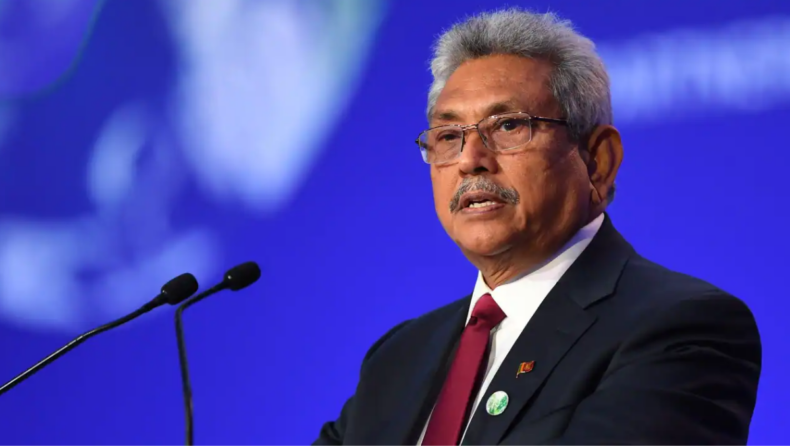On Thursday, the former President Rajapaksa stepped down from his position in the face of the deeping Sri Lanka crisis and mass public protests. He was expected to resign shortly after having fled to Singapore, and to Maldives earlier in the week.
Rajapaksa Resigns as Sri Lanka crisis worsens
The former President Rajapaksa emailed his resignation from Singapore to the parliament speaker. The resignation comes shortly after his escape to Singapore. The move is not surprising as the Sri Lanka crisis worsens day by day.
Rajapaksa’s government is accused of having created the worst economic crisis in the history of Sri Lanka. Protestors have overtaken public buildings, including the President’s House. Acting President Wickremsinghe is expected to take over the position permanently.
Earlier, all 26 cabinet ministers had resigned from their posts. Rajapaksa’s brothers PM Mahinda Rajapaksa and Finance minister Basil Rajapaksa were also forced to resign. Basil Rajapaksa was prevented from leaving as he attempted to flee to Dubai on July 12.
Singapore allows President Rajapaksa on a “private visit”
The Sri Lanka crisis worsens as the now-former President Gotabaya Rajapaksa leaves for Singapore. On Wednesday, he and his wife fled to the Maldives. While in the island nation, he appointed Prime Minister Ranil Wickremsinghe as acting President. His government was facing mass public protests over the worst economic crisis the country has faced in decades.
Singapore allowed him to enter the city-state on a “private visit”. The countrygranted no asylum nor Rajapaksa requested one. Singapore does not grant asylum usually, a spokesperson from the Singapore Ministry of Foreign Affairs clarified.
A Saudia airline private jet flew President Rajapaksa, his wife, and two bodyguards to Singapore. They landed at Changi International Airport at 7 pm local time.
Military told to use “necessary force” in the Sri Lanka crisis
On Thursday the Sri Lankan army authorised the armed forces and the police to use “necessary force” to prevent destruction of life and property. The military establishment had previously refused acting president Ranil Wickremesinghe’s directive to use force on the protesters.
The Army’s statement comes in wake of the massive anti-government protests over the economic crisis and political instability. They continue while former president Gotabaya Rajapaksa flees from Sri Lanka. On Sunday, Army Chief General Shavendra Silva had noted that an opportunity to “resolve the current political crisis in a peaceful manner is now available” and requested the people’s support to maintain peace in the island nation.
The Sri Lankan army earlier said that the ‘peaceful protests should not anyway be dealt with full force, but with minimum force as long as those protesters do not resort to violence or damage the public property.’
The Sri Lankan army has now deployed armoured vehicles on the streets of Colombo. Strict curfew is also imposed in the capital city.
Protestors to give back occupied government buildings
On Thursday, the anti-government protestors in Colombo have announced that they plan to give back occupied government buildings. The announcement follows the expectation that Rajapaksa will resign.
On July 9, several anti-government protestors had taken over government buildings and offices. These included the iconic President’s house, President’s office and Prime Minister’s official residence Temple Trees. On Wednesday, the protestors also took over Prime Minister’s office. The storming of the office resulted in a scuffle with police in which more than 40 people were injured.
Earlier, they had blocked the entrance to these buildings for over three months. The protestors took over the offices following Rajapaksa fleeing to the Malidives.
The Sri Lanka crisis resulted from grave economic mishandling by the former President Rajapaksa’s government. The people are protesting the economic conditions, political instability, and lack of basic necessities such as food, fuel, and medicines.
The protestors have been demanding the resignation of Prime Minister Ranil Wickremsinghe and President Rajapaksa.












